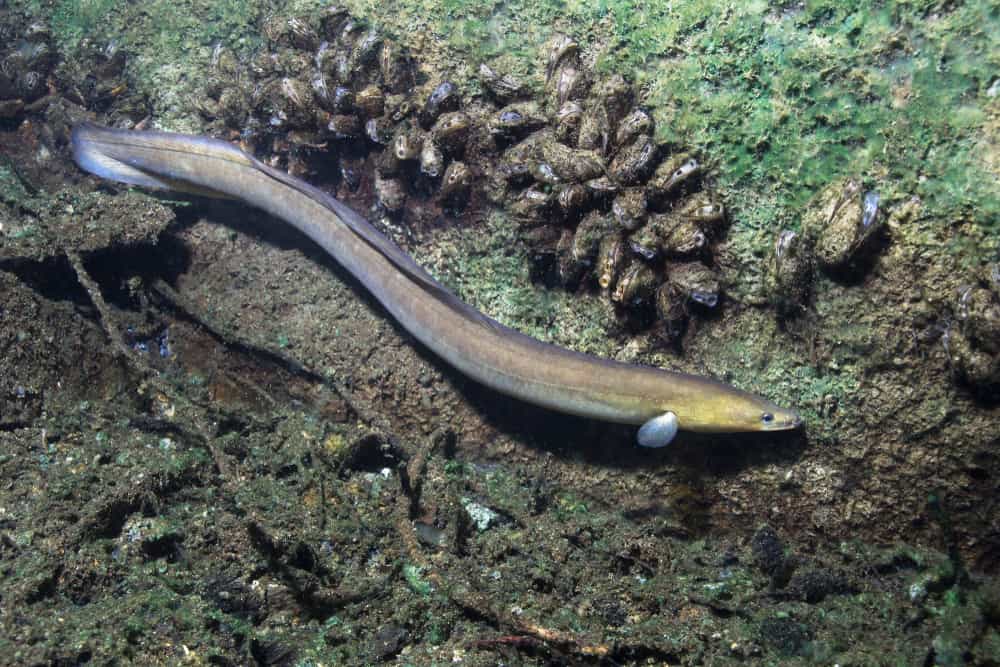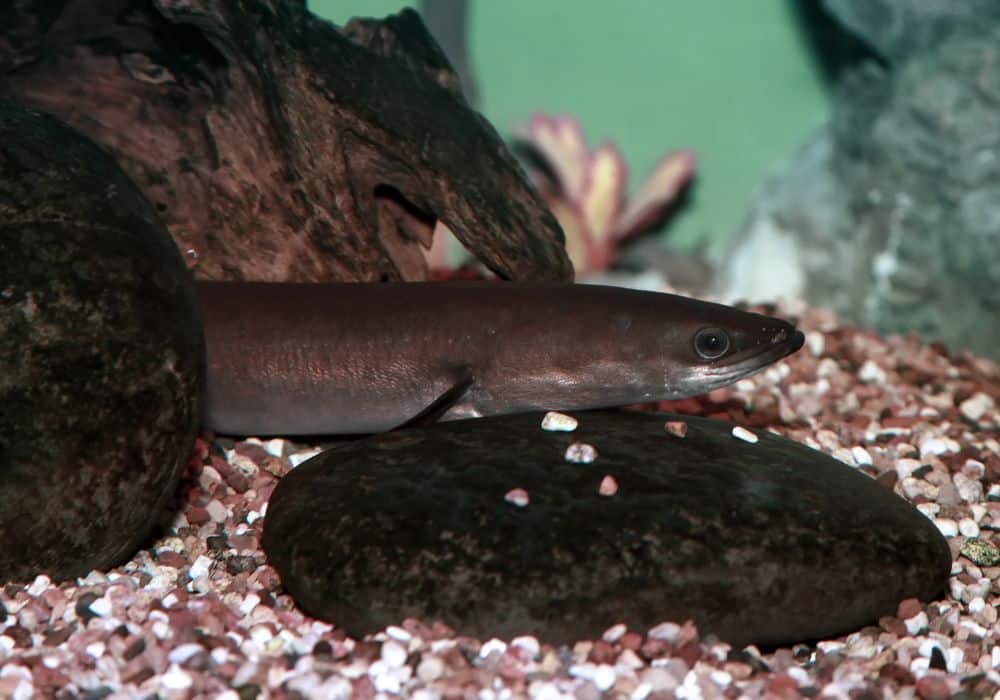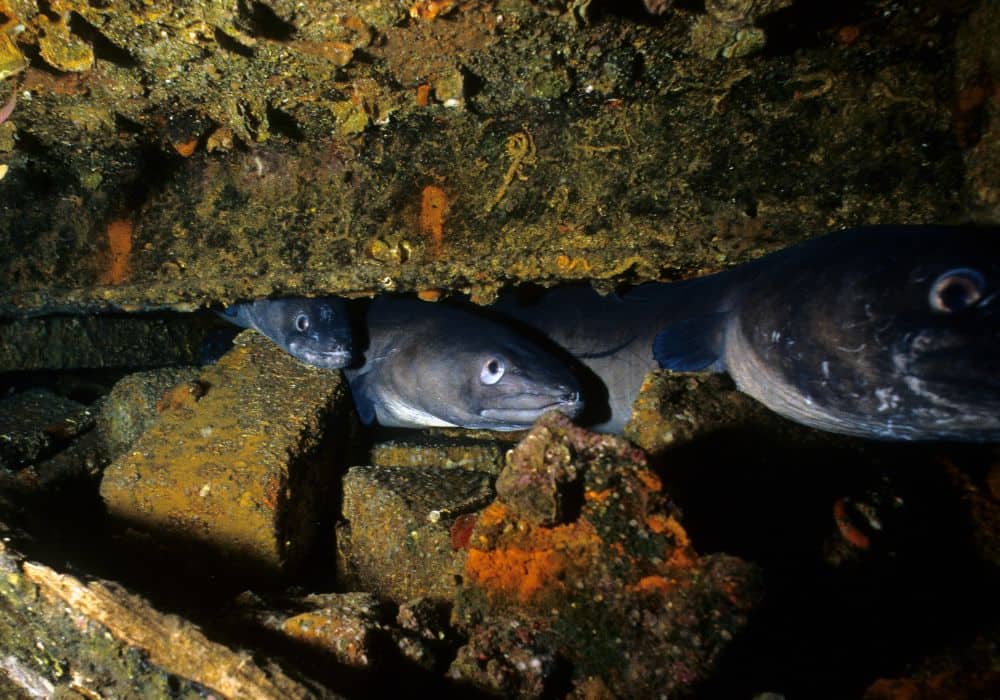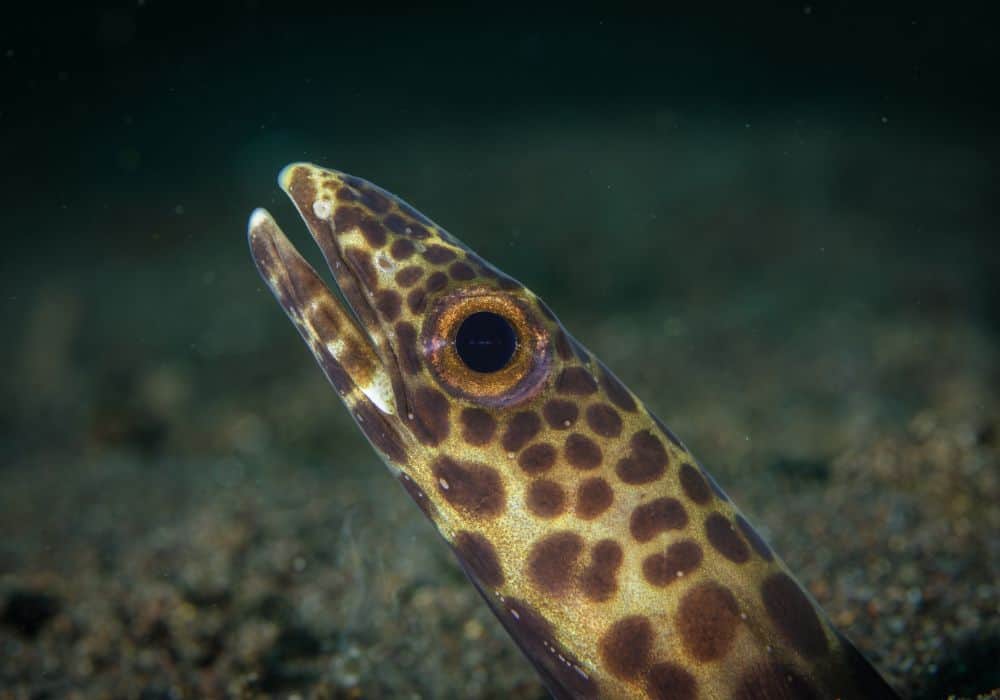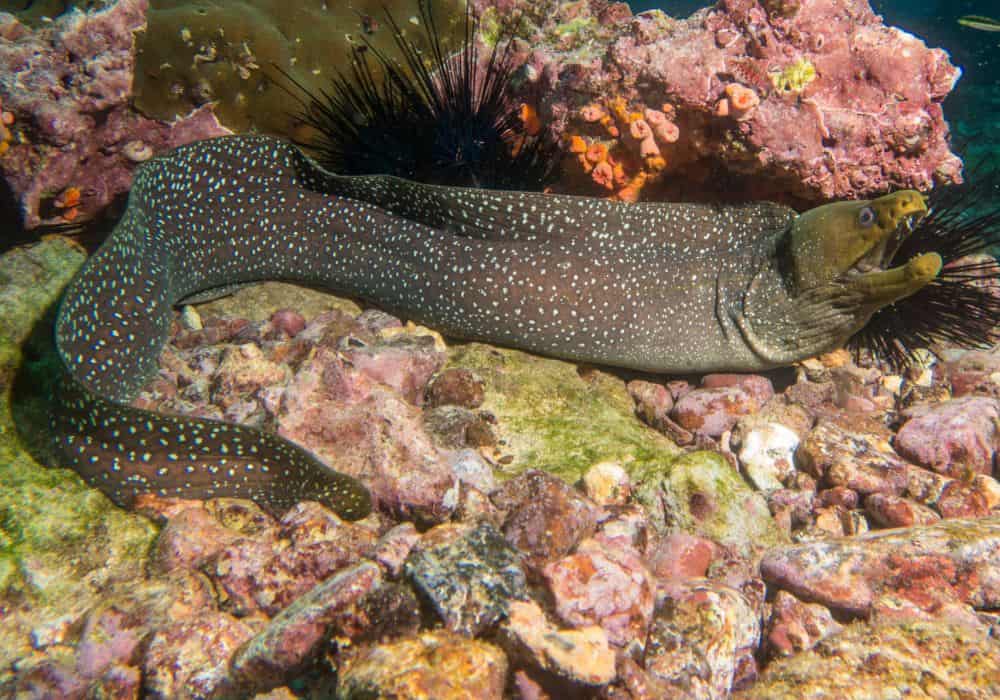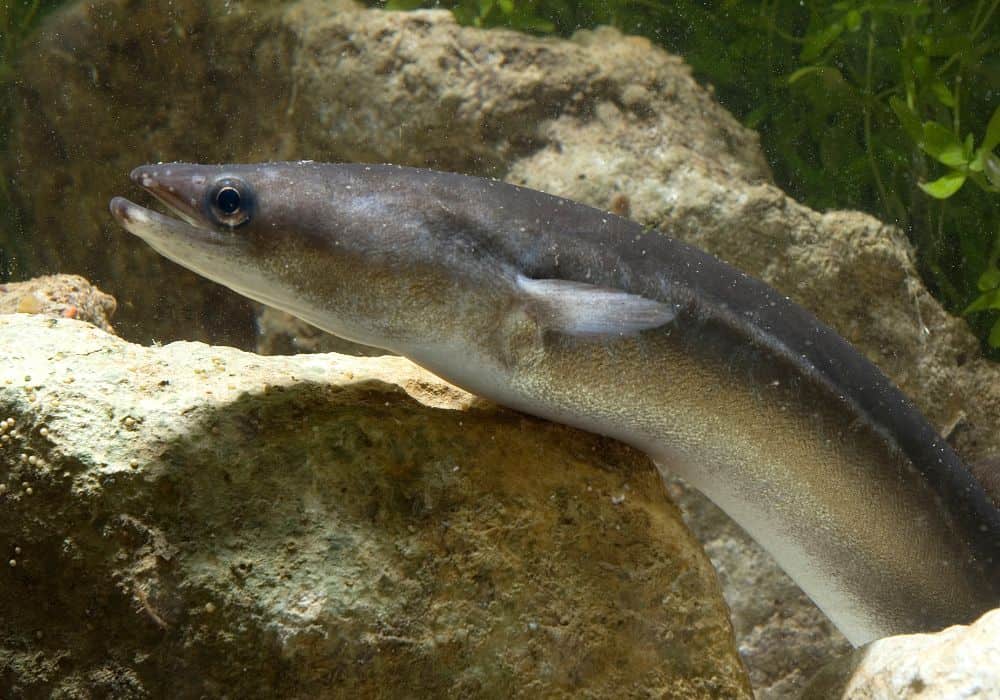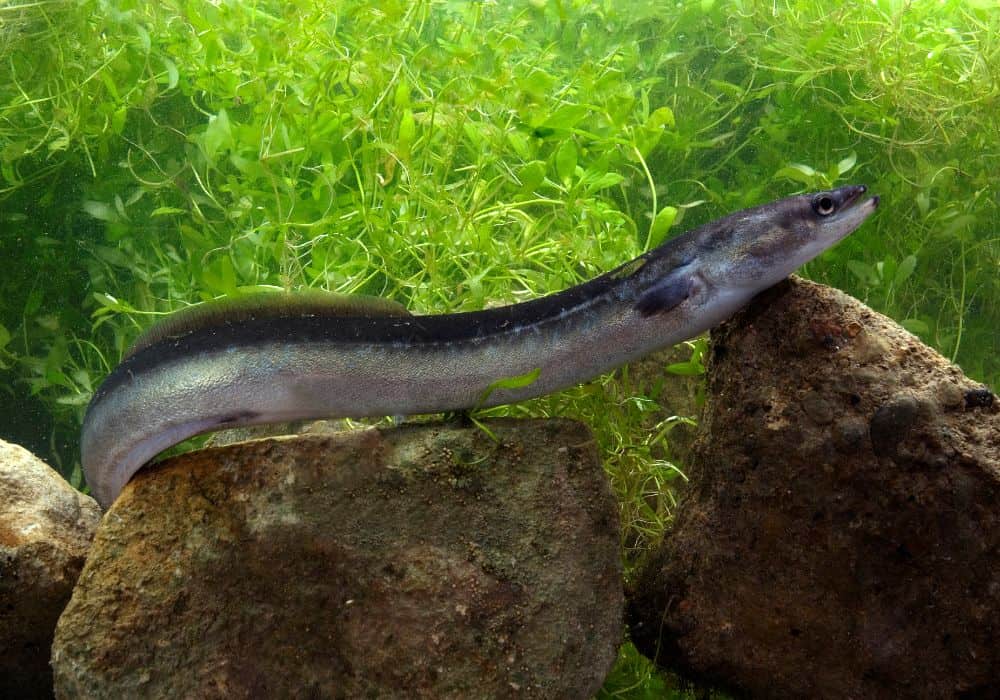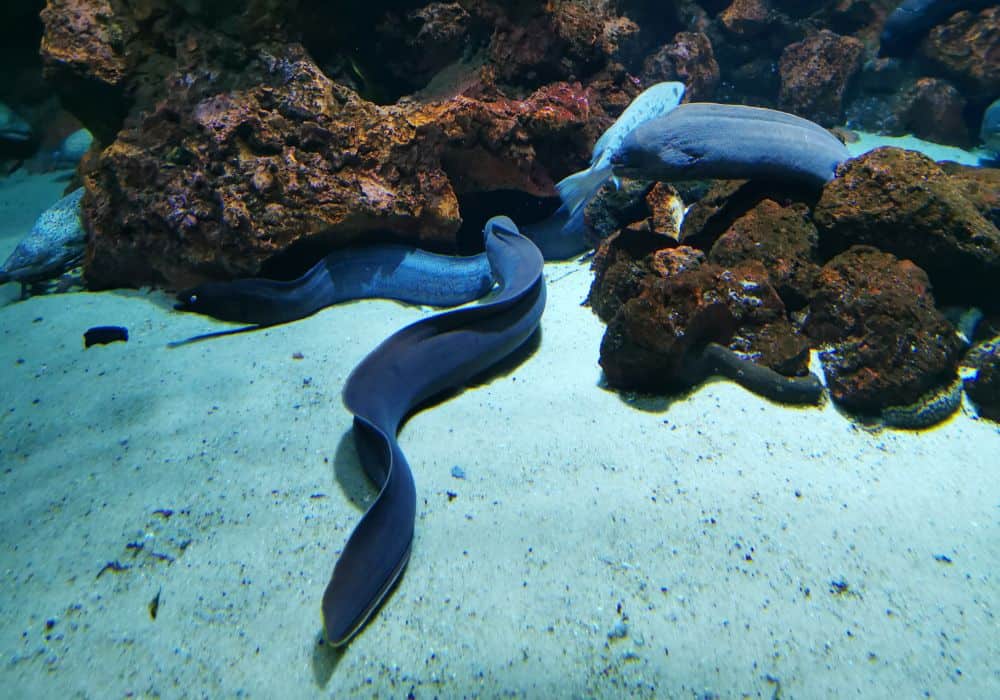Eels are an ancient fish species that have been around for millions of years. You can find them in almost every ocean or lake on earth. They are often thought of as scary animals, but they’re actually quite interesting. They look like snakes but are actually fish. There are many types of eels that live in different habitats eating different things depending on their habitat needs. Let’s take a closer look at these creatures and see what makes them such wonderful creatures.
Physical Characteristics of Eels
- Eels are long and slender, with a flattened body, covered in mucus that allows them to hide in the sand and move through mud.
- Their skin is covered in small scales and they lack pelvic fins or barbels. Some species have poisonous skin that protects them from predators.
- The anatomy of an eel’s throat is similar to other fish species; however, instead of gills for breathing air into their bodies, they have pump-like organs called ‘pharyngeal jaws’ that allow them to breathe while underwater by sucking water into their mouths and then forcing it out again through their gill openings. This makes the eels something between fish and amphibians because they can actually survive both on land and in the water!
- Eels have no lungs or bones but do possess a cartilaginous skeleton consisting only of ribs attached directly to vertebrae (backbones) which protect internal organs like hearts during movement forward while swimming through rough waters during migration periods.
Different Species of Eels
It’s important to note that there are several different types of eel species—Anguilla rostrata (shortfin mako), Anguilla japonica (longfin mako), Anguilla marmorata (marbled snake), and many others. Some are found in freshwater, while others live in the ocean.
But all these different types share a few characteristics: they have elongated bodies with fins running down their backs; they have no scales, and they swim by undulating their bodies from side to side like snakes do when moving upstream through fast-flowing water or across the land during dry spells when there is little food available nearby.
The skin of freshwater eels is usually dark brown or greenish-brown, while the skin of saltwater eels is brownish-yellow.
There are about 130 different species of eels around the world. They range in size from about 12 inches (30 centimeters) long to more than 7 feet (2 meters). And contrary to popular belief, electric eels are not actually true eels, but a type of knifefish, related to carp and catfish. They are the largest members of the family Gymnotidae.
A few of the most common and well-known species of eels are :
Common Eel (Anguilla Anguilla)
The Common Eel is one of the best-known species of eels in the world. It is a freshwater fish that can grow to be over 2 feet long! They are very slimy and have a long body with a thin tail with a sharp edge that they use to cut their prey before eating them. They are usually gray or brown in color but sometimes have spots on their body like the tiger eel.
Conger Eel (Conger conger)
The Conger Eel is one of the most widespread and common species of eel in the world. It is found in European waters, the Mediterranean Sea, and the Atlantic Ocean, especially along the coasts of France and Spain. They grow up to 2 m (6 feet) long and weigh up to 25 kg (55 pounds). They are carnivorous and will eat other eels.
Tiger Eel (Mugil cephalus)
The Tiger Eel is another very common species of eel found in shallow waters around the world. It has an olive green or brown body with yellow stripes running down its sides. Their bodies are covered in slime so they can sneak up on their prey without being seen! Like other types of eels, they use their sharp teeth to cut up food before swallowing it whole!
Moray Eel (Muraenidae)
The moray eel is a species of eel in the family Muraenidae. It is the only member of the genus Muraena and is found in the Indo-Pacific and the eastern Atlantic Ocean. Moray eels are usually greenish or bluish on their backs and white on their bellies. They have sharp teeth that they use to cut through prey, which include fish, crustaceans, mollusks and other marine animals.
Where do Eels Live?
The habitat of eels varies depending on the species. Some species live in freshwater, some in brackish water and others in saltwater. For example, American and European eels are found in both freshwater and saltwater environments while ribbon-like sea snakes are only found in warm tropical waters close to shorelines.
Some eels are catadromous fish, meaning they migrate from the ocean to freshwater to breed. This migration occurs when the spawning season arrives, which varies depending on the species type. Eels are ectothermic animals that can live in a wide range of temperatures and water conditions. Some species, such as the American and European eels, migrate long distances to spawn in freshwater, while others remain in saltwater throughout their lives.
Reproduction of Eels
Eels are oviparous, meaning they lay eggs. The female lays her eggs in the water, and these eggs hatch into larvae that live in the water. Some species of eels can lay as many as 200 eggs each time they reproduce. As eels migrate thousands of miles after spawning the eggs, throughout the rest of their lives, and the lifespan of an eel is only about 25 years on average, most baby eels don’t get to meet their parents before they die!
The eel’s reproductive biology is not well known due to their secretive behavior and the difficulty of studying their reproduction in the wild. The only way to observe their reproductive behavior is to catch them in nets or on lines during the time when they are spawning.
Eels have been observed spawning at night in both freshwater streams and estuaries (shallow areas where rivers meet the sea). The eggs are released into the water column, where they float freely until hatching.
The larvae (young stages) develop into miniature versions of adult eels, but they lack fins and scales. After several months, these larvae become glass eels which are capable of swimming upstream against strong currents as they migrate toward the ocean. Glass eels typically live in shallow coastal waters for two years before maturing into adults.
What do Young Eels Eat?
At a very young age, eels are referred to as glass eels, because when the fish eggs have hatched, they are very small (about 1 cm long), and they have no scales yet. The skin is transparent and you can see their internal organs, so they look like they are made out of glass.
Glass eels are particularly vulnerable to predators because they have such a long journey ahead of them before reaching adulthood. The journey can take anywhere from two months to two years depending on their habitat and water temperature.
Elvers are very small eels that are just starting to become sexually mature and have gained some pigmentation, as opposed to glass eels. They have been known to eat insects like crickets or mosquito larvae, clams, small fish fry, and even smaller elvers. Their diet also includes plankton, which is a type of tiny animal that lives in water. Elvers feed on these organisms by sucking them up with their mouths.
What do Adult Eels Eat?
Eels are carnivorous fish that are found in oceans, rivers and lakes all over the world, and as the elvers mature and grow larger, they move onto bigger prey items like small or large fish, invertebrates, or even sea urchins and crustaceans. In the wild, eels will eat almost anything they can get their mouths around, but in captivity, they will happily eat blood worms, brine shrimp, earthworms and freeze-dried krill.
The diet of an eel will often depend on the species and the location it inhabits. They feed on fish, crustaceans, mollusks and worms. They will also eat frogs and birds that fall into the water and some very large eels have even been known to consume small sharks!
Since they are so long, eels require a lot of food to sustain their large body size; however, they can go for months without eating if necessary.
Eel cannibalism is something that happens in the wild, but it also happens in aquariums — especially if there aren’t enough food sources available for the eels in a tank.
There are two main reasons why an eel would decide to attack another member of its species: hunger or territoriality.
If there aren’t enough food sources around for an eel, it will start looking at other members of its species as potential prey because they are easier targets than larger animals like trout or salmon. And because eels are very territorial, they will attack other eels that enter their territory. The most common way for this to happen is if a mature female eel gets disturbed by another mature male eel that is trying to mate with her.
Cannibalistic eels are usually larger than their prey, so they can eat them whole without having to chew them up first. They have sharp teeth and strong jaws, so they can easily tear apart their victims’ flesh and swallow it whole.
How do Eels Hunt?
Eels are ambush predators, meaning they hunt for food by hiding in their environment and waiting for prey to come close enough to be caught. The eel is not the best swimmer over a long distance, as he can only reach speeds of over 2.5 miles per hour when necessary. When an eel sees something it wants to eat, it opens its mouth wide and sucks the prey into its mouth. It then swallows the prey whole!
They preferably hunt at night. They use their sense of smell to find food and their keen eyesight even in low lighting conditions to track prey down.
Eels are able to survive without oxygen for up to two months while they’re burrowed underground waiting for food to pass by them. This is because they have a special organ called an air bladder that allows them to breathe even when there isn’t enough oxygen in the water for them to survive on their own accord.
What Are the Predators of Eels?
The list of predators for eels is quite long, and it includes a wide variety of animals. There are many different types of sharks that prey upon eels, including the great white shark, reef shark, and bull shark. The tuna also eats eels on occasion; however, tuna prefers to eat smaller fish (such as anchovies) rather than larger ones like eels.
Eagles have been known to hunt for and consume both fresh-water and salt-water varieties of these fish as well. Porpoises have been seen eating them too! Seals will sometimes eat baby eels that were born in their territory.
Octopus may feed on dead ones washed ashore due to pollution rather than actively hunting them down themselves! Fish such as trout or bass may also prey upon young specimens if they feel threatened by their presence near underwater vegetation.
Mammals such as raccoons or mink may also feed on juvenile or adult American eels if they can catch them during their migration from freshwater streams and rivers into saltwater estuaries.
Of course, a lot depends on the species of eels, the region they live in and the size or maturity of the animal, but one predator is omnipresent as usual and that is humankind. As many people consider the eel to be some kind of delicacy full of vitamins and minerals.
Can You Keep Eels As Pets?
Eels are a popular aquarium fish, but their care requirements make them difficult to keep in a home aquarium. Eels need to be kept in a large tank with a lot of hiding places and live rock. A single eel can grow up to 2 feet long and weigh more than 10 pounds, depending on the species, so it should be kept in a tank of at least 100 gallons.
Eels require an environment with good water quality and hard water that mimics their natural habitat. They need to be fed live prey like fish or small crabs, but some species eat dead meat or frozen foods as well. The eel should be fed once a day for every 50 grams of its body weight and preferably using specific food like high protein pellets with ingredients as tubifex worms, bloodworms, livers, beef hearts or fish meal.
If you keep an eel in a tank with no rocks or other hiding places, it might become aggressive because it thinks there are no predators around. Aggressive behavior includes biting people who handle the tank too much or trying to bite anything that comes near its mouth while swimming.
If you choose to keep an eel as a pet, make sure you know what you are getting into before committing yourself to this type of animal.
Final Words
As you can see, eels are fascinating creatures. They are interesting to study and they make great hobby projects if you have the space for them. There are many different types of eels and they all have different characteristics that make them unique. Even now, there are still many mysteries surrounding these species and they remain a fascinating object for many biologists to study.
